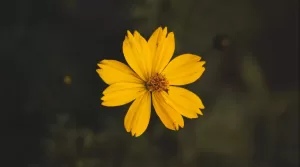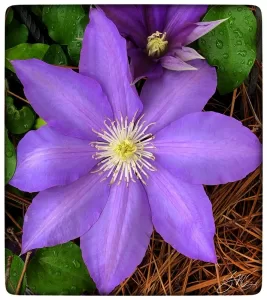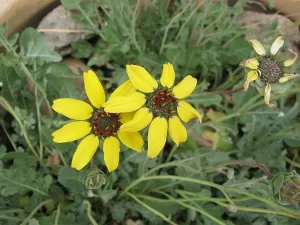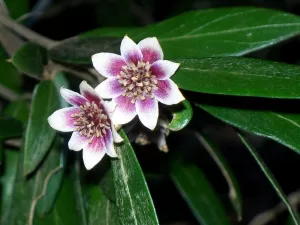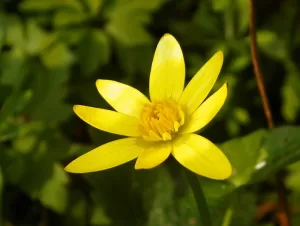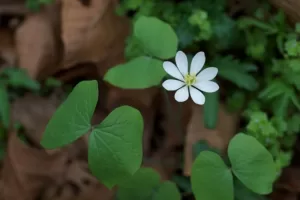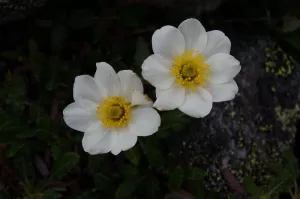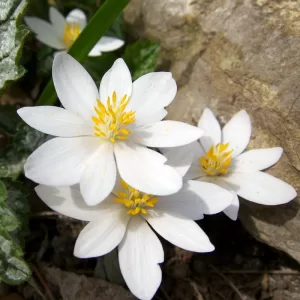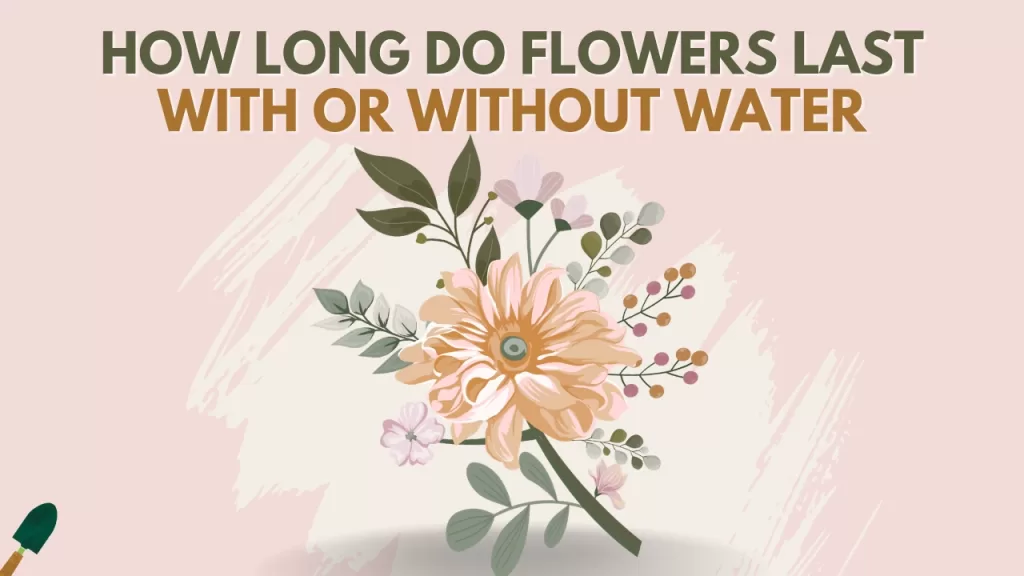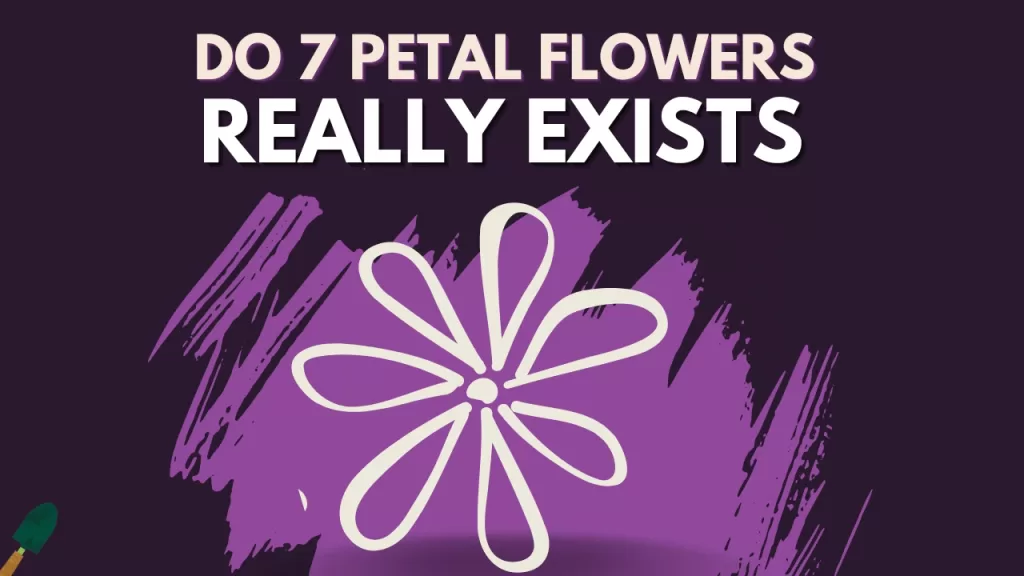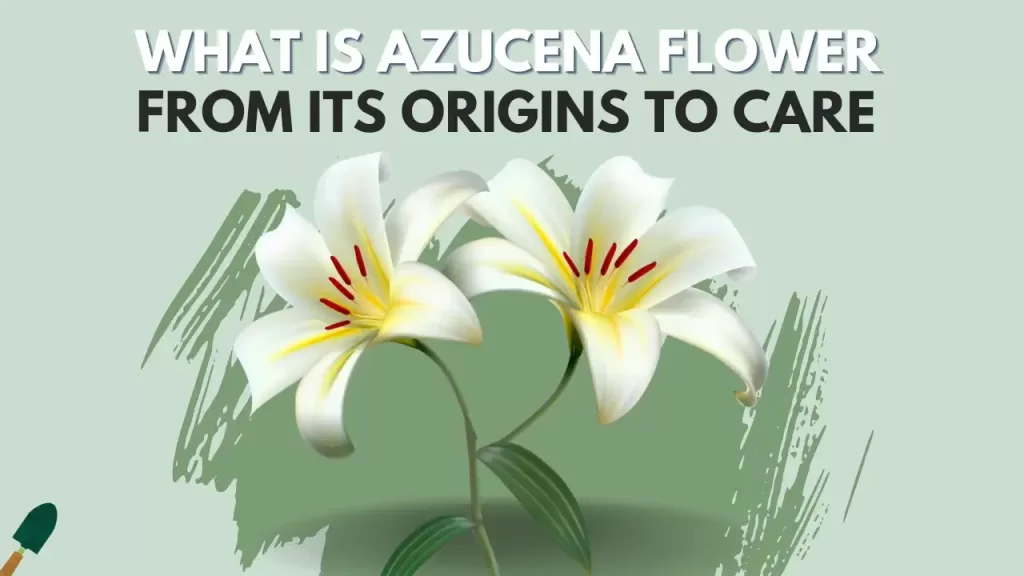Have you ever noticed a flower with eight petals and wondered what kind of flower it is? Flowers are known for their beauty and fragrance, but did you know that they can also be unique in terms of the number of petals they have?
Some flowers have a specific number of petals, while others can vary depending on their species or variety.
Flowers with 8 petals are not very common, which is why they are so special and sought after by many gardeners.
In this article, we’ll explore some of the most popular flowers with 8 petals.
But first, let’s talk about petals and what makes them such an essential part of a flower.
Petals: What Makes Them Unique?
Petals are the colorful, often fragrant part of a flower that attracts insects and other animals for pollination. They are an essential part of the reproductive system of a flower and come in a wide range of colors, sizes, and shapes. Here are some interesting facts about petals:
- Petals are actually modified leaves that have evolved over time to attract pollinators and protect the reproductive parts of the flower.
- Some flowers have just one petal, while others can have hundreds.
- The number of petals a flower has can be influenced by genetics, environmental factors, and other factors.
- Flowers with a certain number of petals can have special meanings or symbolism in different cultures and traditions.
So what makes flowers with 8 petals so unique? While there is no definitive answer, some theories suggest that the number 8 is associated with prosperity, good fortune, and balance in certain cultures.
Regardless of the reason, flowers with 8 petals are certainly eye-catching and make for stunning additions to any garden.
So what are the names of flowers that have 8 petals?
List of All The Flowers That Have 8 Petals
Flowers that have 8 petals are:
- Cosmos
- Clematis
- Berlandiera Iyrata
- Antherosperma flower
- Lesser celandine
- Twinleaf Flower
- Dryas octopetala
- Bloodroot Flower
Let’s look at each flower one by one.
Cosmos: A Delicate and Colorful Flower
Cosmos is a genus of herbaceous flowering plants in the family Asteraceae. Native to Mexico, these plants are known for their delicate and colorful flowers that have 8 petals, which bloom in shades of pink, white, and crimson. Here are some interesting characteristics of the Cosmos flower:
- Cosmos flowers have a distinctive bowl-shaped appearance, with 8 petals arranged around a yellow center.
- These flowers can grow up to 4 feet tall, making them perfect for adding height and drama to a garden.
- Cosmos are easy to grow and care for, making them a popular choice for both beginner and experienced gardeners.
- They prefer full sun and well-drained soil and can tolerate a wide range of temperatures and weather conditions.
- Cosmos flowers are also popular with pollinators such as butterflies and bees, making them an excellent choice for a wildlife-friendly garden.
How To Grow Cosmos
If you want to grow Cosmos in your garden, here are some tips to help you get started:
- Plant Cosmos seeds in the spring, once the danger of frost has passed.
- Choose a location that receives at least 6 hours of sunlight per day.
- Water the plants regularly, but be careful not to overwater, as this can cause the roots to rot.
- Deadhead spent flowers to encourage new blooms and prolong the flowering season.
- Consider companion planting Cosmos with other pollinator-friendly flowers such as zinnias, marigolds, and sunflowers.
With its delicate beauty and easy-care nature, Cosmos is a must-have for any garden. Try adding these stunning flowers to your landscape for a burst of color and a touch of elegance.
Clematis: A Climbing Beauty
Clematis is a genus of climbing vines in the buttercup family, Ranunculaceae. These elegant flowers with 8 petals are prized for their large, showy blooms and come in a wide range of colors, including purple, pink, white, and red. Here are some interesting facts about Clematis:
- Clematis flowers have 8 petals arranged in a star shape and can grow up to 6 inches in diameter.
- These flowers are known for their climbing habit and can reach heights of up to 20 feet with proper support.
- Clematis vines are hardy and adaptable and can be grown in a variety of climates and soil types.
- They prefer a location with partial shade, as full sun can cause the blooms to wilt in hot weather.
- Clematis flowers are a favorite of butterflies, making them a great choice for a wildlife-friendly garden.
How To Grow Clematis
If you want to grow Clematis in your garden, here are some tips to help you get started:
- Choose a location with well-drained soil and plenty of room for the vine to grow.
- Provide support for the vine to climb, such as a trellis, fence, or arbor.
- Water the plant regularly, especially during hot, dry weather as the flower can wilt really fast without water.
- Mulch around the base of the plant to help retain moisture and regulate soil temperature.
- Prune the plant in early spring to remove any dead or damaged wood, and to shape the vine for optimal growth and flowering.
With their stunning blooms and climbing habit, Clematis vines are sure to add beauty and interest to any garden. Consider adding these versatile and adaptable plants to your landscape today!
Berlandiera Iyrata
Berlandiera Iyrata, also known as Chocolate flower or Brown-eyed Susan, is a wildflower native to Mexico and the southwestern United States. This flower is known for its strong chocolate scent and 8 beautiful yellow-gold petals. It is a member of the Asteraceae family and has eight petals.
- The Berlandiera Iyrata is a small and bushy perennial plant that grows up to 2 feet tall.
- The flowers are typically 2-3 inches in diameter and have yellow-gold petals with a dark brown center disk.
- The petals are oval-shaped and slightly curved with a pointed tip.
- The leaves of the Berlandiera Iyrata are also oval-shaped and are covered in fine hairs.
How To Grow Berlandiera Iyrata
Berlandiera Iyrata is a hardy plant that requires minimal care once established. Here are some tips to keep in mind when growing this flower:
- Planting: Berlandiera Iyrata prefers well-draining soil and full sun exposure. It can tolerate some shade but may not flower as profusely. Plant the seedlings in the spring or fall.
- Watering: Water the plant deeply once a week, making sure the soil is moist but not waterlogged. The plant is drought tolerant and can survive on little water once established.
- Fertilizing: Berlandiera Iyrata does not require fertilization. However, you can add compost or organic matter to the soil before planting to provide the necessary nutrients.
- Pruning: Deadhead the flowers regularly to encourage more blooming. Prune back the plant in the fall to keep it neat and tidy.
Uses
Berlandiera Iyrata is a popular garden plant due to its beautiful appearance and unique chocolate scent. Here are some common uses of this flower:
- Ornamental: The Berlandiera Iyrata is commonly grown in gardens as an ornamental plant. It is used in rock gardens, borders, and containers.
- Aromatherapy: The strong chocolate scent of the Berlandiera Iyrata makes it a popular choice for aromatherapy. The dried flowers are used in sachets and potpourri.
- Medicinal: Berlandiera Iyrata has been used in traditional medicine to treat various ailments such as fever, colds, and digestive issues. However, its effectiveness and safety have not been scientifically proven, and it should not be used as a substitute for medical treatment.
Berlandiera Iyrata is a beautiful and hardy plant that can add color and fragrance to any garden. Its unique chocolate scent and yellow-gold petals make it a popular choice for gardeners and aromatherapy enthusiasts. With minimal care, this flower can thrive in various growing conditions and provide years of enjoyment.
Antherosperma Flower
The Antherosperma flower, also known as Tasmanian Oak, is a rare flower found in the rainforests of Tasmania and southeastern Australia. This flower has eight petals, making it a perfect fit for this article. Here’s what you need to know about the Antherosperma flower:
- The Antherosperma flower has eight petals that are light green or white in color.
- The petals are long and thin, giving the flower an elegant look.
- The flower’s center has a yellow or orange color, which makes it stand out from the greenery around it.
- The Antherosperma flower is found in the rainforests of southeastern Australia and Tasmania. It grows in areas with moist soil and plenty of shade.
- The Antherosperma flower blooms in late spring to early summer, usually from October to December.
How to Grow Antherosperma Flower
- Since the Antherosperma flower is a rare and delicate flower, it requires special care. Here are some tips for caring for this flower:
- The Antherosperma flower prefers soil that is moist and well-drained.
- The flower requires partial shade or filtered sunlight. Direct sunlight can damage delicate petals.
- Regular watering is essential to keep the soil moist. Water the plant deeply once a week during the blooming season and reduce the frequency during the dormant period.
- Use a slow-release fertilizer once a year during the spring season to provide the plant with the necessary nutrients.
- The Antherosperma flower is primarily used for ornamental purposes. It is a popular choice among gardeners for its unique look and delicate features.
If you are lucky enough to have the Antherosperma flower in your garden, make sure to take proper care of it to enjoy its beauty for years to come.
Lesser Celandine
The lesser celandine, also known as the Ranunculus ficaria, is a perennial plant that belongs to the buttercup family. It is native to Europe but can be found in various parts of North America as well. The flowers of the lesser celandine have eight petals, making them one of the few plants that fit this category. Here are some of the characteristics of Lesser Celandine:
- The lesser celandine has bright yellow flowers that bloom in early spring.
- The flowers are small, measuring about an inch in diameter.
- The flower has eight petals arranged in a star-like shape.
- The plant also has glossy, dark green leaves that are heart-shaped.
Planting and Care
If you are interested in planting lesser celandine in your garden, here are some tips to keep in mind:
- Plant the bulbs in early fall for spring blooms.
- Choose a location with well-drained soil and partial shade.
- Water the plant regularly, but avoid overwatering.
- Mulch around the plant to retain moisture in the soil.
- Deadhead the spent flowers to encourage more blooms.
Uses
The lesser celandine is often used for ornamental purposes in gardens due to its bright and cheerful flowers. However, it has also been used for medicinal purposes in the past. The plant contains a compound called protoanemonin, which has been found to have anti-inflammatory and analgesic properties. It has been used to treat various ailments, including hemorrhoids, gout, and rheumatism.
Caution
While the lesser celandine has medicinal properties, it is important to note that all parts of the plant contain toxic compounds that can cause skin irritation and blistering. It is important to handle the plant with care and avoid ingesting any parts of it.
Also, Lesser Celandine is considered a weed in lawns and gardens due to its aggressive growth rate and can outgrow other plants or suck up all the nutrients from the soil.
Overall, the lesser celandine is a beautiful and interesting plant that can add a unique touch to your garden. With proper care and attention, it can thrive and produce lovely yellow blooms every spring.
Twinleaf Flower
The twinleaf flower, also known as Jeffersonia diphylla, is a native wildflower found in the eastern regions of North America. It is a perennial plant that typically grows up to a height of 6-12 inches and blooms in early spring. The twinleaf flower is so named because its leaves are split down the middle, resembling two leaves fused together.
- The twinleaf flower has eight white petals that are arranged in a star shape.
- Each petal measures around 1 inch in length.
- The petals are slightly curved and have a delicate, papery texture.
- The flowers are borne on thin, wiry stems that emerge from the base of the plant, and they can be easily overlooked due to their small size.
Habitat and Growing Conditions
- Twinleaf flowers prefer to grow in rich, moist, well-draining soils in partially shaded areas such as woodland edges, rocky slopes, and stream banks.
- They are commonly found growing in the understory of deciduous forests and are often associated with other spring wildflowers such as trilliums, bloodroot, and hepaticas.
Symbolism and Uses
The twinleaf flower has been used for medicinal purposes by Native American tribes for centuries. The plant contains alkaloids that are believed to have analgesic and anti-inflammatory properties, and it has been used to treat a variety of ailments such as fever, coughs, and digestive issues.
In addition to its medicinal uses, the twinleaf flower has also been used in landscaping and gardening due to its attractive foliage and delicate blooms. The plant is relatively easy to cultivate and can be propagated through division or from seed.
Dryas octopetala
Dryas octopetala, commonly known as mountain avens, is a small perennial plant that belongs to the rose family. It is native to the arctic and alpine regions of Europe, Asia, and North America. This hardy plant thrives in rocky and well-drained soils at high elevations and is often found in subalpine and alpine meadows, as well as in rock crevices and ledges.
- The flowers of Dryas octopetala are small, white, and have eight petals arranged in a cup shape.
- The petals are broad and overlapping, forming a delicate and elegant flower.
- The center of the flower contains a yellow cluster of stamens that surround the pistil, which matures into a hairy, cylindrical fruit.
- The flowers bloom in early summer and last for several weeks.
Uses
- The plant is commonly used in traditional medicine for its anti-inflammatory and antiseptic properties.
- The leaves of Dryas octopetala are leathery and evergreen, providing year-round ground cover in its native habitats.
- The plant has a symbiotic relationship with certain fungi that help it absorb nutrients from the soil.
- Dryas octopetala is a popular ornamental plant in rock gardens and alpine plant collections.
In conclusion, Dryas octopetala is a beautiful and hardy plant with delicate and elegant flowers that are a treat for the eyes. Its adaptation to the harsh environments of the arctic and alpine regions makes it a fascinating subject for botanists and nature enthusiasts alike.
Bloodroot Flower
The Bloodroot flower (Sanguinaria canadensis) is a unique perennial flower native to eastern North America. It is named after the red sap that flows through its stem and roots, which was once used by indigenous people as a dye and for medicinal purposes. The flower also has 8 petals making it a unique flower. Here are some interesting characteristics of this beautiful flower:
- The Bloodroot flower has eight to twelve pure white petals and surrounds a yellow center filled with numerous stamens.
- This flower blooms in early spring, typically in March or April, before the leaves fully develop.
Habitat
- The Bloodroot flower prefers shaded areas and can often be found growing in the understory of deciduous forests, mainly near streams or other bodies of water.
- This flower is relatively easy to grow in moist, well-drained soil and partial shade. However, it is important to note that the sap of the Bloodroot flower is toxic and can cause skin irritation and other adverse reactions, so it should be handled with care.
Symbolism
- The Bloodroot flower is often associated with purity and innocence, as well as new beginnings and rebirth.
Whether you’re a gardener looking to add some unique and beautiful flowers to your yard or simply someone who appreciates the natural beauty of the world around us, the Bloodroot flower is definitely worth considering.
Conclusion
Now that we’ve gone through the list of flowers that have eight petals, you might be wondering how you can incorporate them into your garden. Here are a few key takeaways of all the 8 petals flowers to keep in mind:
- Cosmos: These bright and cheerful flowers are perfect for adding pops of color to your garden, and they attract butterflies and bees.
- Clematis: This climbing plant can add height and texture to your garden, and its unique blooms are sure to catch the eye.
- Berlandiera Iyrata: This wildflower is perfect for naturalizing your garden, and its distinctive chocolate scent is a real treat.
- Antherosperma Flower: If you’re looking for something unique and eye-catching, the Antherosperma flower is sure to fit the bill.
- Lesser celandine: This low-growing plant is perfect for ground cover, and its cheerful yellow flowers are a welcome sight in early spring.
- Twinleaf Flower: The twinleaf flower is a beautiful and unique wildflower that is often overlooked due to its small size. Its delicate white petals and distinctive leaves make it a standout addition to any garden or natural area.
- Dryas octopetala: The mesmerizing white flowers and cup shape make it stand out in the garden.
- Bloodroot Flower: Its delicate white petals and yellow center make for a stunning sight in the early spring, and its rich cultural history adds a layer of depth and meaning to its already beautiful appearance.
Overall, incorporating flowers with eight petals into your garden is a great way to add variety and interest to your space. If you want to add more variety you can also add 7 petal flowers as they are also as unique as 8 petal flowers. Whether you choose one of the flowers we’ve highlighted here or another variety, we hope this article has inspired you to explore new options for your garden. Happy planting!

